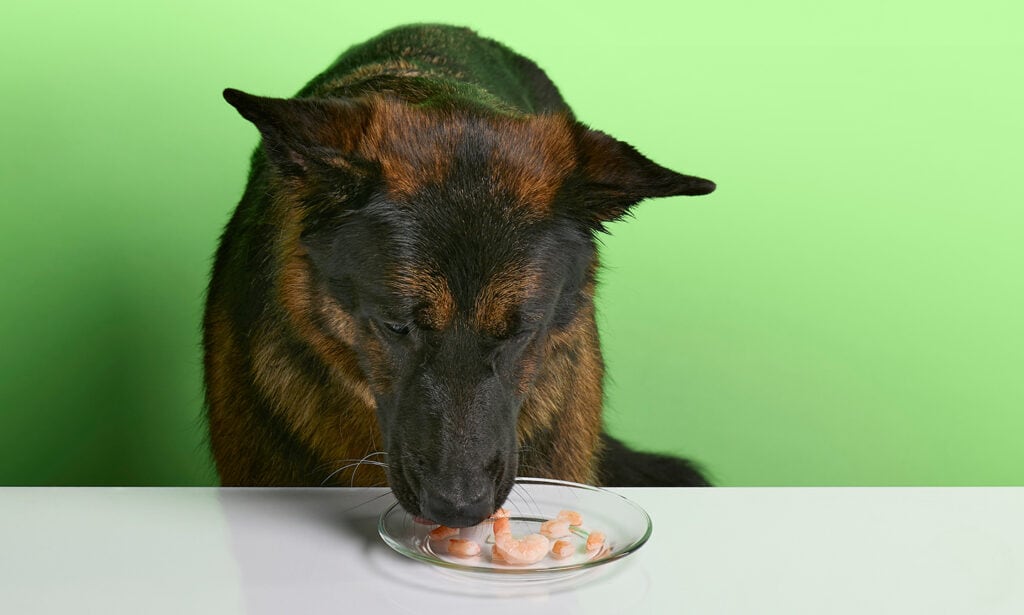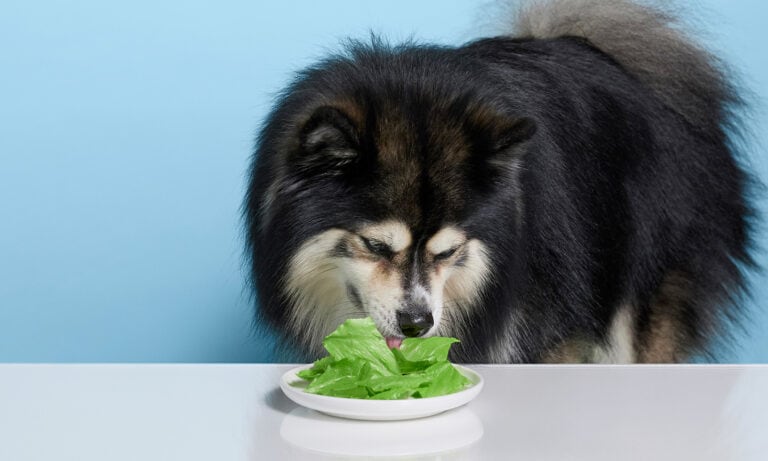Can dogs eat seafood? Yes, they can! Whether it’s salmon, trout or even lobster, as long as seafood is deshelled, deboned and properly cooked, dogs can enjoy many types.
We spoke with Dr. Gary Richter, DVM, owner and medical director of Holistic Veterinary Care in Oakland, California, and founder of Ultimate Pet Nutrition, for tips and advice on how to include seafood in your pup’s diet, as well as what to know about seafood allergies in dogs.
Benefits of Seafood for Dogs
Is seafood good for dogs? Yes! When fed in moderation and small amounts, seafood can be a nutritious addition to your dog’s balanced diet.
- It’s an excellent source of protein and omega-3 fatty acids, which are beneficial for your pup’s skin, digestion, and immune system.
- Seafood also has many minerals that are important for healthy body function, such as zinc, iodine, selenium, magnesium and potassium.
Risks of Feeding Seafood to Your Dog
Can dogs eat seafood? While dogs can eat seafood as a treat or mixed in with their regular food, Dr. Richter has a few things to keep in mind before feeding your dog seafood:
- Dogs can have seafood allergies. It’s rare, but can happen. Some symptoms of seafood allergies in dogs include gastrointestinal upset, vomiting, diarrhea or itchy skin. Take your pup to the vet immediately if you suspect your dog has a seafood allergy.
- Raw fish can contain a harmful parasite. It’s extremely important to fully cook seafood before feeding it to your dog. Raw fish, especially fish in the salmon family (e.g., trout, whitefish), may have a parasite that’s very harmful to dogs. This is called “salmon poisoning.” Symptoms include lack of appetite, vomiting, diarrhea, weakness, increased respiratory rate and seizures. Take your dog to the vet immediately if you suspect they have salmon poisoning.
- Shells and bones can be choking hazards or obstruct the gastrointestinal tract. Make sure to remove any shells and fish bones as even tiny pieces can be dangerous.
- Feeding your dog large amounts of seafood can expose them to toxins and contaminants. Seafood contains traces of mercury and other contaminants. Like people, dogs should only eat seafood in moderation and small amounts to avoid any harmful effects.
How to Feed Seafood to Your Dog
You should always consult with your vet before serving seafood to determine the right portion size for your dog. Even a healthy treat like seafood should be factored into your dog’s optimum daily balanced diet.
- Serve wild-caught instead of farmed fish. Dr. Richter says it’s healthier for your dog. (And it’s healthier for you, too!)
- Seafood should be properly cooked. Never feed your dog raw fish. Seafood should be fully cooked all the way through.
- Deshell and debone the seafood, just like you would when you eat it.
- Serve seafood plain. Avoid adding any butter, salt or other spices.
- Serve small amounts and in moderation. Go ahead, sprinkle a little lobster on top of your pup’s regular food!
Frequently Asked Questions
Q:Can dogs have seafood allergies?
A:Yes, but it’s rare. Some symptoms of seafood allergies in dogs include gastrointestinal upset, vomiting, diarrhea or itchy skin.
Q:Can dogs eat imitation crab?
A:Yes, but since imitation crab is a processed food, Dr. Richter doesn’t recommend feeding it to dogs.
Q:Can dogs eat seafood broth/chowder?
A:Technically yes, but many canned options contain a lot of dairy, salt and other seasonings that can be harmful to dogs. It’s best to make a homemade version limiting these ingredients.
Q:Can dogs eat lobster?
A:Yes, but you should only feed your dog the lobster meat—never the shell—while also following the guidelines above. And don’t drizzle your pup’s lobster with butter since dogs should have limited dairy.
Q:Can dogs eat shrimp?
A:Yes, but make sure the shrimp is peeled and fully cooked.
Top Dog Food & Treats with Seafood
Can dog eat seafood in prepared dog foods and treats? If you’re looking to give your dog all the nutritional benefits of seafood without having to cook it at home, here are some yummy foods and treats to try:
Before incorporating any new foods into your dog’s diet, always consult with your veterinarian to make sure it’s a safe addition to your pet’s diet given their health, diet needs and current medications. Your vet will tell you if your dog can eat seafood and the appropriate kind and serving size. If you suspect your pet is sick, please call your vet immediately. For health-related questions, always consult your regular veterinarian when possible as they can make the best recommendations for your pet. (If you need help finding a vet near you use this link.)
Expert input provided by Dr. Gary Richter, DVM, owner and medical director of Holistic Veterinary Care in Oakland, California, and founder of Ultimate Pet Nutrition.
Share:












